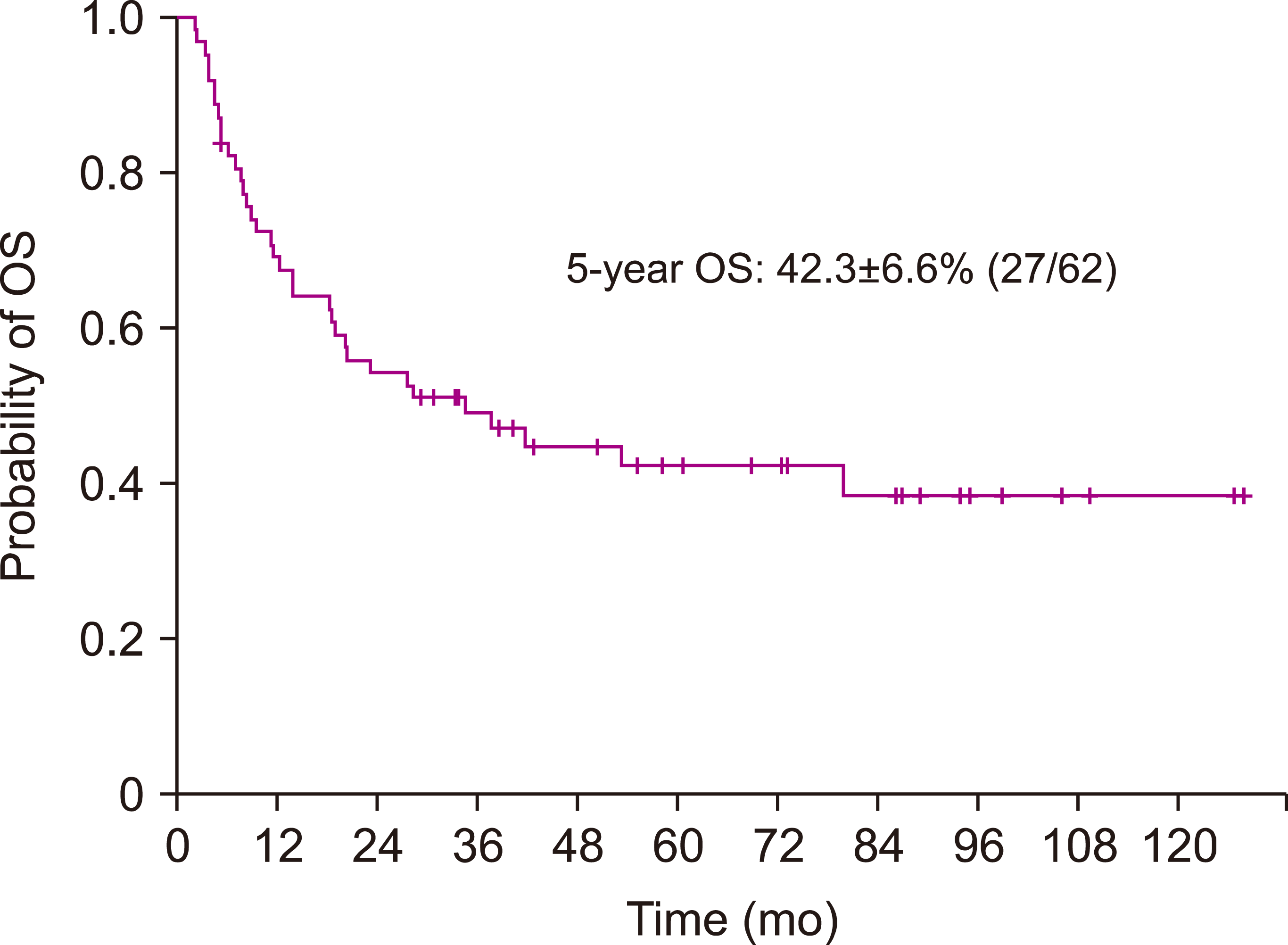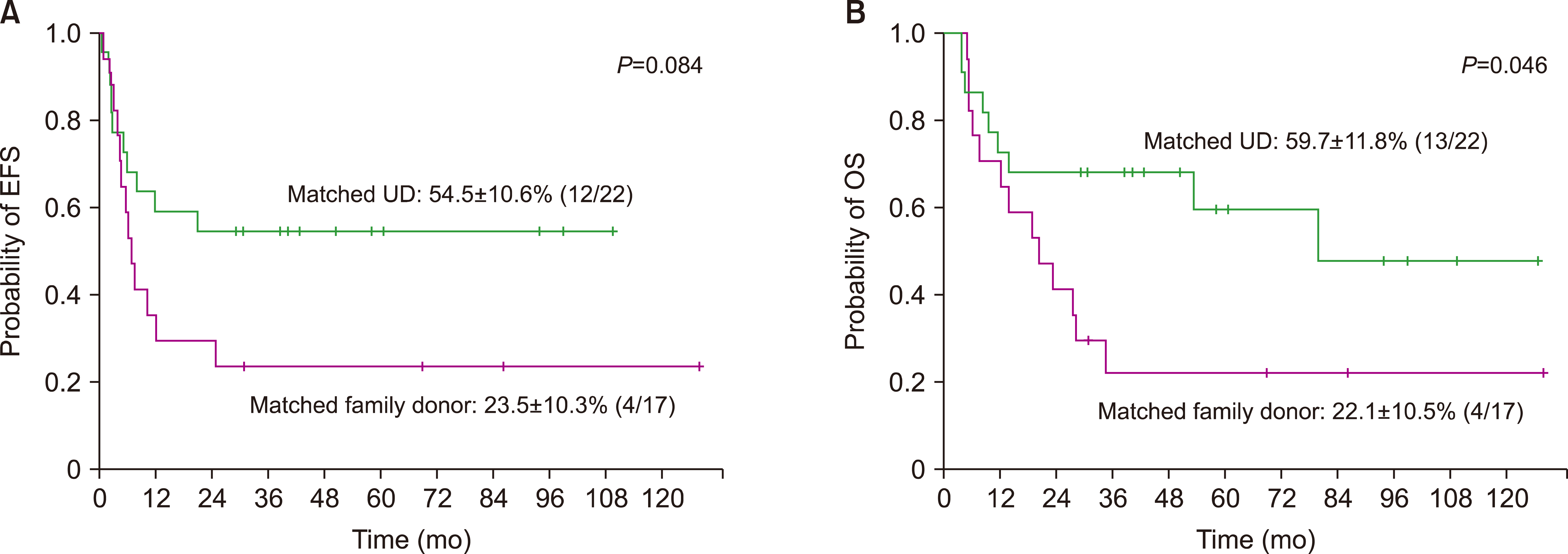1. Ward E, DeSantis C, Robbins A, Kohler B, Jemal A. 2014; Childhood and adolescent cancer statistics, 2014. CA Cancer J Clin. 64:83–103. DOI:
10.3322/caac.21219. PMID:
24488779.
3. Leung AWK, Vincent L, Chiang AKS, et al. 2012; Prognosis and outcome of relapsed acute lymphoblastic leukemia: a Hong Kong Pediatric Hematology and Oncology Study Group report. Pediatr Blood Cancer. 59:454–60. DOI:
10.1002/pbc.24162. PMID:
22610685.
4. Roy A, Cargill A, Love S, et al. 2005; Outcome after first relapse in childhood acute lymphoblastic leukaemia - lessons from the United Kingdom R2 trial. Br J Haematol. 130:67–75. DOI:
10.1111/j.1365-2141.2005.05572.x. PMID:
15982346.
5. Nguyen K, Devidas M, Cheng SC, et al. 2008; Factors influencing survival after relapse from acute lymphoblastic leukemia: a Children's Oncology Group study. Leukemia. 22:2142–50. DOI:
10.1038/leu.2008.251. PMID:
18818707. PMCID:
PMC2872117.
6. Tallen G, Ratei R, Mann G, et al. 2010; Long-term outcome in children with relapsed acute lymphoblastic leukemia after time-point and site-of-relapse stratification and intensified short-course multidrug chemotherapy: results of trial ALL-REZ BFM 90. J Clin Oncol. 28:2339–47. DOI:
10.1200/JCO.2009.25.1983. PMID:
20385996.
8. Davies SM, Ramsay NK, Klein JP, et al. 2000; Comparison of preparative regimens in transplants for children with acute lymphoblastic leukemia. J Clin Oncol. 18:340–7. DOI:
10.1200/JCO.2000.18.2.340. PMID:
10637248.
9. Hill-Kayser CE, Plastaras JP, Tochner Z, Glatstein E. 2011; TBI during BM and SCT: review of the past, discussion of the present and consideration of future directions. Bone Marrow Transplant. 46:475–84. DOI:
10.1038/bmt.2010.280. PMID:
21113184.
10. Tracey J, Zhang MJ, Thiel E, Sobocinski KA, Eapen M. 2013; Transplantation conditioning regimens and outcomes after allogeneic hematopoietic cell transplantation in children and adolescents with acute lymphoblastic leukemia. Biol Blood Marrow Transplant. 19:255–9. DOI:
10.1016/j.bbmt.2012.09.019. PMID:
23041605. PMCID:
PMC3553255.
11. Sabloff M, Chhabra S, Wang T, et al. 2019; Comparison of high doses of total body irradiation in myeloablative conditioning before hematopoietic cell transplantation. Biol Blood Marrow Transplant. 25:2398–407. DOI:
10.1016/j.bbmt.2019.08.012. PMID:
31473319. PMCID:
PMC7304318.
12. Lee EJ, Han JY, Lee JW, et al. 2012; Outcome of allogeneic hematopoietic stem cell transplantation for childhood acute lymphoblastic leukemia in second complete remission: a single institution study. Korean J Pediatr. 55:100–6. DOI:
10.3345/kjp.2012.55.3.100. PMID:
22474465. PMCID:
PMC3315619.
13. Locatelli F, Zecca M, Messina C, et al. 2002; Improvement over time in outcome for children with acute lymphoblastic leukemia in second remission given hematopoietic stem cell transplantation from unrelated donors. Leukemia. 16:2228–37. DOI:
10.1038/sj.leu.2402690. PMID:
12399966.
14. Smith AR, Baker KS, Defor TE, Verneris MR, Wagner JE, Macmillan ML. 2009; Hematopoietic cell transplantation for children with acute lymphoblastic leukemia in second complete remission: similar outcomes in recipients of unrelated marrow and umbilical cord blood versus marrow from HLA matched sibling donors. Biol Blood Marrow Transplant. 15:1086–93. DOI:
10.1016/j.bbmt.2009.05.005. PMID:
19660721. PMCID:
PMC5225985.
15. Kennedy-Nasser AA, Bollard CM, Myers GD, et al. 2008; Comparable outcome of alternative donor and matched sibling donor hematopoietic stem cell transplant for children with acute lymphoblastic leukemia in first or second remission using alemtuzumab in a myeloablative conditioning regimen. Biol Blood Marrow Transplant. 14:1245–52. DOI:
10.1016/j.bbmt.2008.08.010. PMID:
18940679.
16. Lee JW, Kim SK, Jang PS, et al. 2016; Treatment of children with acute lymphoblastic leukemia with risk group based intensification and omission of cranial irradiation: a Korean study of 295 patients. Pediatr Blood Cancer. 63:1966–73. DOI:
10.1002/pbc.26136. PMID:
27463364.
17. Chung NG, Lee JW, Jang PS, Jeong DC, Cho B, Kim HK. 2013; Reduced dose cyclophosphamide, fludarabine and antithymocyte globulin for sibling and unrelated transplant of children with severe and very severe aplastic anemia. Pediatr Transplant. 17:387–93. DOI:
10.1111/petr.12073. PMID:
23551397.
18. Kang HM, Kim SK, Lee JW, Chung NG, Cho B. 2021; Efficacy of low dose antithymocyte globulin on overall survival, relapse rate, and infectious complications following allogeneic peripheral blood stem cell transplantation for leukemia in children. Bone Marrow Transplant. 56:890–9. DOI:
10.1038/s41409-020-01121-9. PMID:
33199818.
19. Przepiorka D, Weisdorf D, Martin P, et al. 1995; 1994 Consensus conference on acute GVHD grading. Bone Marrow Transplant. 15:825–8. PMID:
7581076.
20. Jagasia MH, Greinix HT, Arora M, et al. 2015; National Institutes of Health consensus development project on criteria for clinical trials in chronic graft-versus-host disease: I. The 2014 Diagnosis and Staging Working Group Report. Biol Blood Marrow Transplant. 21:389–401. e1. DOI:
10.1016/j.bbmt.2014.12.001. PMID:
25529383. PMCID:
PMC4329079.
21. Peters C, Schrappe M, von Stackelberg A, et al. 2015; Stem-cell transplantation in children with acute lymphoblastic leukemia: a prospective international multicenter trial comparing sibling donors with matched unrelated donors-The ALL-SCT-BFM-2003 trial. J Clin Oncol. 33:1265–74. DOI:
10.1200/JCO.2014.58.9747. PMID:
25753432.
22. Lee JW, Kim S, Jang PS, Chung NG, Cho B. 2021; Differing outcomes of patients with high hyperdiploidy and ETV6-RUNX1 rearrangement in Korean pediatric precursor B cell acute lymphoblastic leukemia. Cancer Res Treat. 53:567–75. DOI:
10.4143/crt.2020.507. PMID:
33070555. PMCID:
PMC8053883.
23. Oskarsson T, Söderhäll S, Arvidson J, et al. 2016; Relapsed childhood acute lymphoblastic leukemia in the Nordic countries: prognostic factors, treatment and outcome. Haematologica. 101:68–76. DOI:
10.3324/haematol.2015.131680. PMID:
26494838. PMCID:
PMC4697893.
24. Peters C, Dalle JH, Locatelli F, et al. 2021; Total body irradiation or chemotherapy conditioning in childhood ALL: a multinational, randomized, noninferiority phase III study. J Clin Oncol. 39:295–307. DOI:
10.1200/JCO.20.02529. PMID:
33332189. PMCID:
PMC8078415.
25. Friend BD, Bailey-Olson M, Melton A, et al. 2020; The impact of total body irradiation-based regimens on outcomes in children and young adults with acute lymphoblastic leukemia undergoing allogeneic hematopoietic stem cell transplantation. Pediatr Blood Cancer. 67:e28079. DOI:
10.1002/pbc.28079. PMID:
31724815.





 PDF
PDF Citation
Citation Print
Print




 XML Download
XML Download